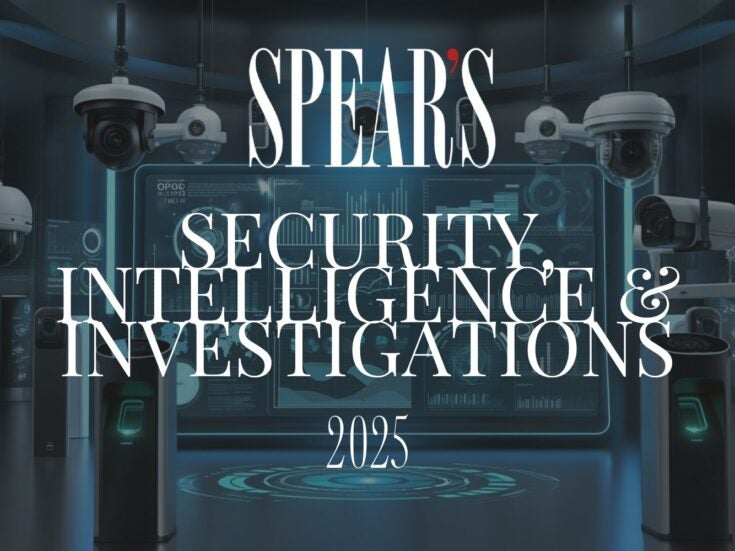The clinking of the chains must’ve sounded like the joyous peals of church bells to them.
The clinking of the chains must’ve sounded like the joyous peals of church bells to them, father and son, reunited after twelve years, three months and twelve days.
Sgt. Pablo Emilio Moncayo was only nineteen when he was kidnapped, shot and taken at gunpoint from his anti-narcotics jungle base by the Marxist terrorist guerrillas the Revolutionary Armed Forces of Colombia (FARC). On Tuesday, 30 March 2010, after twelve years as a captive in Colombia’s Amazon jungle, Sgt. Moncayo was returned to freedom and a family he barely recognized, but never stopped loving him and fighting for his freedom.
Moncayo has been the most famous remaining FARC captive since Franco-Colombian politician Ingrid Betancourt was rescued in 2008, not merely because he is the longest-held kidnap victim known to still be alive (some families search for relatives for more than 20 years), but because of his father, Prof. Gustavo Moncayo.
Since his son was taken on 21 December 1997, Gustavo Moncayo has campaigned relentlessly for his son’s release, but his campaign took on particular poignancy and global renown in 2007 when he walked halfway across Colombia (a country the size of France and Spain put together), from Sandoná to Bogotá, bound in chains and carrying a photograph of his son, a young lieutenant with a resolute face under a proud hat, an expression unblemished.
For three years he wore the same shackles used on FARC captives wandering like some condemned ghost of Marley all over Colombia, Venezuela and Europe. He would never be free, he said, until his son was free.
So at 6:55pm on Tuesday, at the landing strip of Gustavo Artunduaga airport in the town of Florencia in the southern Colombian department of Caquetá, Gustavo saw his son alight from the Brazilian helicopter and finally loosened his chains. But it was his son, Pablo Emilio, who took them off his father and cast them to the ground, before embracing him.
“You can’t know how amazing it is to return to civilization,” he said in his first words as a free man. Pablo Emilio then graciously thanked the presidents of Ecuador, Venezuela and Brazil, as well the Colombian Senator Piedád Córdoba, who worked closely with the Catholic Church and the International Committee of the Red Cross to negotiate his release. Both Sen. Córdoba and Msgr. Leonardo Gómez were there to see him handed over to the Red Cross, who then flew him to freedom.
Sgt. Moncayo also gave news of two other long-term military hostages: the lives of Col. Yesid Duarte and Sgt. Libio Martínez are “in grave danger,” he warned. “They need an international NGO to help liberate them.”
But in reality, there is almost no chance the FARC will release more hostages, as neither Pres. Uribe nor either of his possible successors when he leaves office in August will meet the FARC’s conditions for the release of imprisoned FARC guerrillas. Pres. Uribe has always insisted that any freed FARC prisoner be released to another country like France, so that they do not return to the guerrilla in Colombia.
But politics was far from the minds of the Moncayos on Tuesday. For after passing preliminary medical examinations, Pablo Emilio insisted on leaving the military base to go home to his family. Despite having symptoms of hypoglycemia and scars all over his body from six separate instances of Leishmaniasis, a jungle parasite that burrows deep into the flesh and poisons the body, Pablo Emilio spent the evening with his parents, his sisters, his nieces and nephews and even a little sister who had not been born when he was taken.
Every family member carried white daisies to greet him and brought with them a live band to play typical Colombian music. The following day, his father spoke of his joy at awaking to hear his son’s voice in the kitchen, looking at photos and chatting with the family. Wednesday afternoon they celebrated their joyous reunion with a huge family asado, a Latin American barbecue, with more live music.
For all the joy and wonder of this long-overdue release, one of the most poignant moments has also been one of the most controversial, as well as all-too-emblematic of dealings with the FARC. Almost immediately after Sgt. Moncayo’s release, Telesur, a television station that is closely allied with Pres. Hugo Chávez of Venezuela, broadcast footage of Moncayo in the jungle that showed him eagerly anticipating the arrival of the helicopter that would take him to freedom and to his family.
The poignant clip shows the soldier dressed in fatigues, restlessly walking in circles, before stopping to look up at the sky, then glance at the old digital watch on his wrist and then say to the camera: “Few hours remain until I am reunited with my family. I cannot imagine how happy they will be to see me after so many years. I can’t imagine.” His voice is quiet and flat, with restrained emotion. He then hooks his hands behind his back, like someone accustomed to being shackled, and resumes walking in circles.
At first, the Colombian government was enraged and demanded an explanation for how journalists of this chavista television station came to be in the jungle with the FARC. Then Telesur admitted the video was not taken by their journalists, but was emailed to them by an unknown source.
So the government agents looked closer and noticed that Sgt. Moncayo is wearing a black tee-shirt under his fatigues in the video, while the day of his release, he was wearing a white one. In short, the video was faked, filmed and edited by the FARC itself, but is of a level of sophistication far greater than its usual proof-of-life fare. They’re not that isolated in the jungle after all, it seems.
Frank Pearl, Colombia’s High Commissioner for Peace and Reconciliation (and the host of the international delegation I joined to examine Colombia’s peace process late this last January) nevertheless condemned the video, saying its very existence was a breach of the terms of the hostage release, as such moments should be private and never turned into a media circus. Still, Commissioner Pearl and everyone else concurred, it’s good to have such a national hero home.
Throughout his twelve-year captivity, Sgt. Moncayo refused to give up his military fatigues. He said it was his “love of the uniform” that helped him survive. “All this time I have kept my uniform, I have endured for my love of the institution. I respect the Constitution as a soldier and a citizen.” He has yet to consider, he says, whether or not he will return to active duty.
Another soldier was released by the FARC two days earlier, on Sunday: Josué Daniel Calvo, who was only held captive for eleven months – one of the lucky ones. Sgt. Libio José Martínez, who was taken in the same attack as Sgt. Moncayo, remains captive with the FARC.
The Red Cross has another mission in the jungles of Colombia this week: to collect the cadaver of Police Major Julián Ernesto Guevara, who died shortly after he was taken by the FARC in 2006, and return it to his mother, Emperatríz de Guevara, who keeps her son’s photograph near her at all times. If government DNA tests confirm that it is Major Guevara, his mother will receive his body, with Major Guevara’s only daughter by her side, and bury him according to her wishes.
“Somehow Julián Ernesto is still kidnapped. We hope a new cycle will now begin. We must be strong,” she said. Major Guevara has been far beyond the reach of such earthly concerns, having shed his shackles when his soul left his body. Such is the divine roulette of kidnappings in the jungle.






